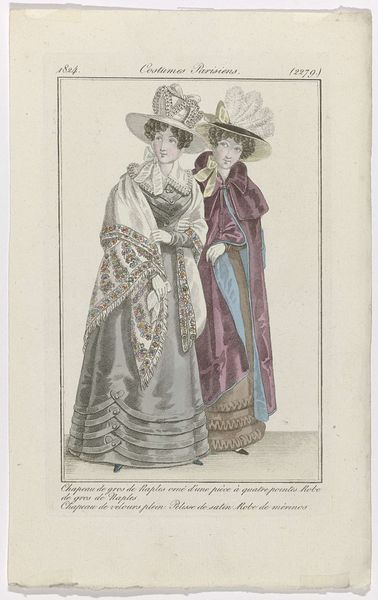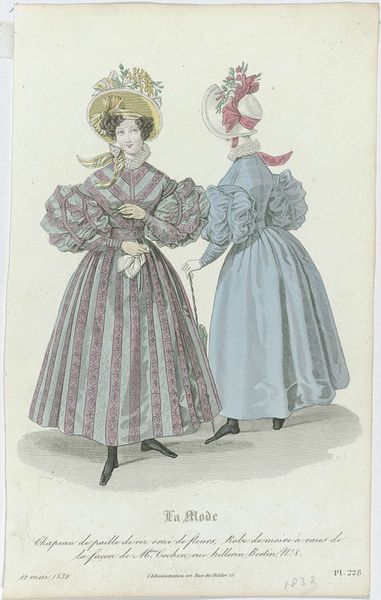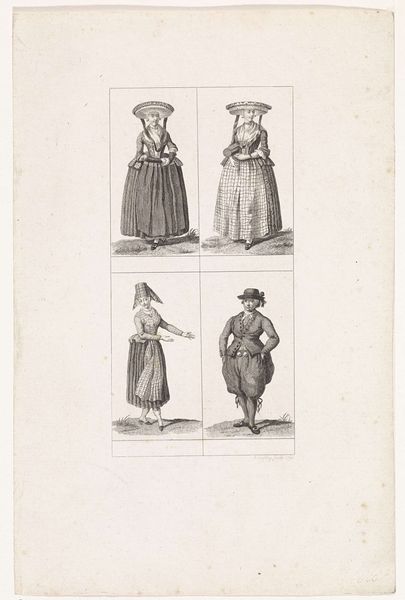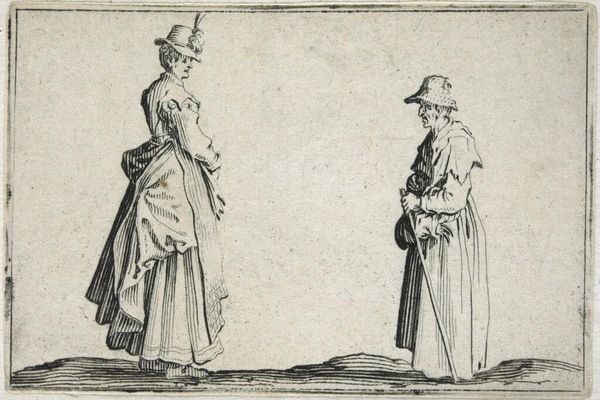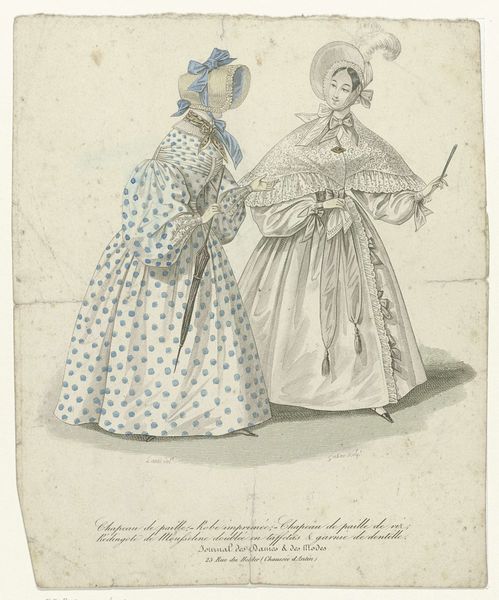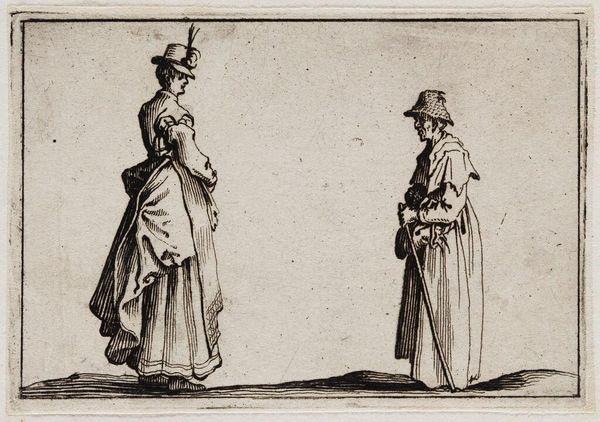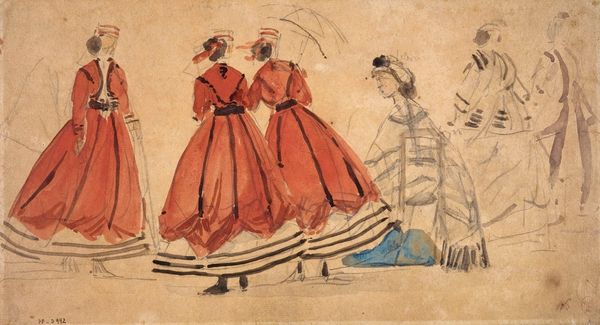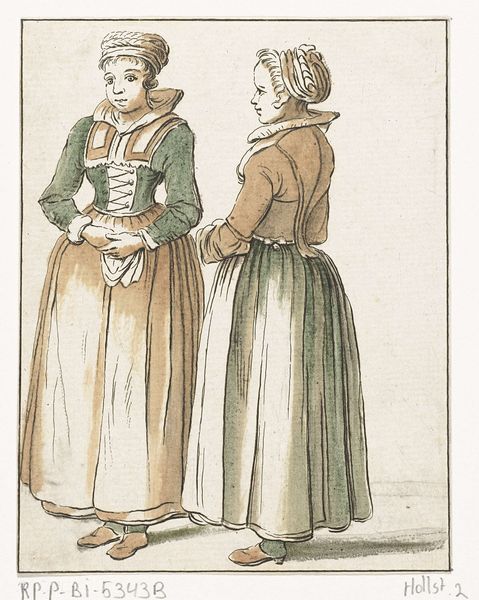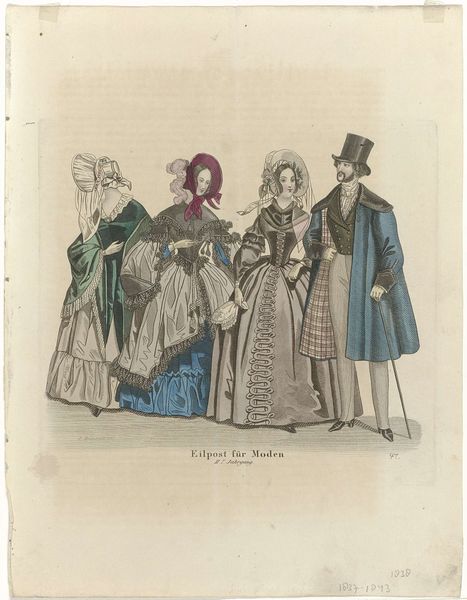
drawing, pen
#
drawing
#
neoclacissism
#
historical fashion
#
pen
#
genre-painting
#
history-painting
Dimensions: height 256 mm, width 218 mm
Copyright: Rijks Museum: Open Domain
Curator: Daniel Dupré's "Three Women in Roman Masquerade Costumes", dating back to 1790, offers us a fascinating glimpse into late 18th-century fashion and social rituals. Crafted with pen and drawing techniques, this piece immediately sets a scene of intrigue. Editor: I find myself drawn to the almost dreamlike quality of it, a certain stillness despite the suggestion of conversation. The monochromatic palette, with subtle washes of color, contributes to a muted atmosphere, a kind of whisper from the past. Curator: Indeed. Dupré, positioned within the Neoclassical movement, likely aimed to capture the fashion and customs of elite women participating in Roman Carnival traditions. These masquerades, of course, allowed for a temporary transgression of social norms. Editor: Masks are always powerful symbols. The masked figure stands centrally, her gaze direct, almost confrontational. There's a hint of theatricality about her, contrasted against the women who stand in relative anonymity beside her, facing away and chatting quietly. What stories might the masks be hiding? What transformations or liberation do they enable within that space? Curator: I find myself wondering what these displays meant for the female self-representation of that time. Did dressing in what was purported to be "Roman" garb truly afford these women any real freedom, or was it merely a costume performance reinforcing societal expectations under the guise of playful rebellion? I see this type of attire in genre and historical paintings across the era. Editor: Exactly. They represent both mystery and conformity, playing out familiar stories of transgression within expected societal roles, as you mentioned. This balance captures an age that was full of change, standing on the precipice of revolution but still deeply entrenched in tradition. The careful and reserved application of colors reinforces a sense of order despite the carnival occasion. Curator: Reflecting on this artwork through a contemporary lens, I'm struck by the complexities of masquerade. On the surface, it hints at freedom. Delving deeper, the nuances reveal a societal portrait and questions the role women had within it. Editor: Ultimately, these three figures, poised between eras, invite us to look beyond their masks and recognize the complex visual and historical cues they present in the drama of everyday life.
Comments
No comments
Be the first to comment and join the conversation on the ultimate creative platform.
